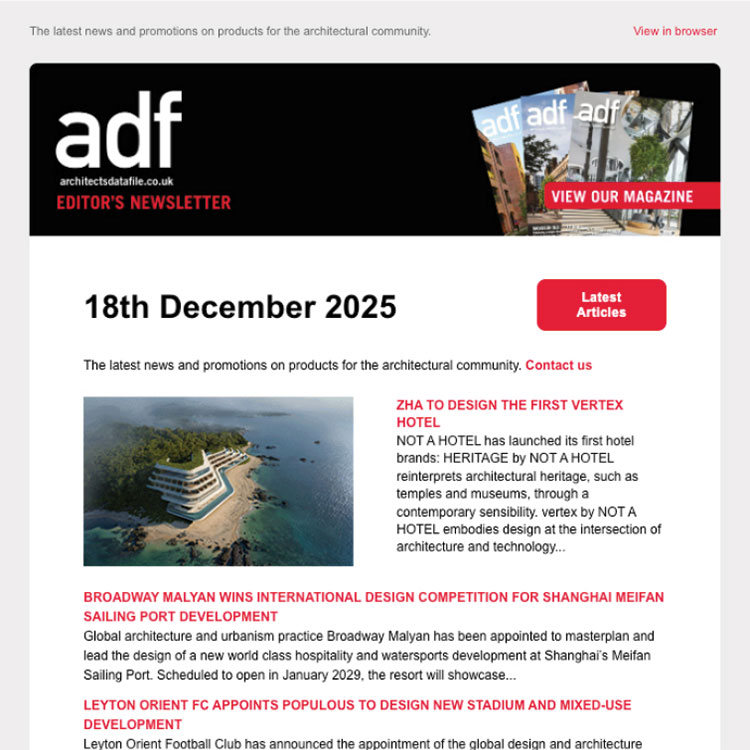Will House of Arup discusses why making a success of BIM requires a culture of collaboration and adaptability, which was put to the test on the project to create Europe’s largest cancer treatment and research campus in Manchester
We are in the midst of a technological revolution which shows no sign of slowing down, and which all industries must find a way to keep pace with. While the architectural, engineering and construction industry has long embraced Building Information Modelling (BIM), its quality and technicality continues to advance.
This means that, to truly take advantage of these technologies, teams must be willing to work collaboratively and adaptably across sectors and expertise. If the industry can collectively develop this growth mindset, everyone will benefit. We could harness BIM to enable the digital delivery of projects across their whole design period – from concept, to detailed design, and even to construction and handover.
An example of this approach is the Paterson Building, a new £150m cancer research facility at The Christie NHS Foundation trust in Manchester, and the largest cancer treatment and research campus in Europe. This ‘social infrastructure’ project has both national and international significance, showcasing what BIM can produce when stakeholders join forces, and offering lessons for future projects.
Putting collaboration front and centre
The success of the Paterson Building project is due to the prioritisation of collaboration. Three separate client organisations – The Christie NHS Foundation Trust, the University of Manchester and Cancer Research UK – could have been extremely challenging. Each is a leader in its respective field, and had their own requirements and hopes for the project. We were also dealing with a particularly sensitive site, our task being to design a new building due to a devastating fire that had destroyed the original.
The team chose not to see these elements as hurdles, instead proactively choosing to adopt a unified mindset across the full project team and its clients. For example, Arup and BDP Architecture worked together from the very outset of the project. They were both involved in leading extensive stakeholder workshops, and this collaboration continued throughout the
entire project.
Turning to technology at moments of uncertainty
The Paterson Building’s development took place during the global Covid-19 pandemic. As with many other buildings at the time, there was naturally much concern about the risk this crisis posed to the timeline and outcome of the project. But luckily, as with so many industries during the pandemic, technology came to the rescue.
The team’s weekly BIM and design meetings went uninterrupted due to the use of Teams and other virtual engagement tools. Rather than shy away from embracing these technologies, teams which remained adaptable and open-minded were able to quickly embed them into their ways of working. And, while we do not expect a global pandemic to occur in the way this one unfolded again, lessons can be taken from this approach to technological advancement.
These technologies are now embraced as part of everyday working culture, due to the fact they actually accelerated the pace of collaboration. We were able to host short co-ordination calls and share screens, enabling the team to resolve issues with relative immediacy. This may seem obvious today, but we are all working in ways that would have been unthinkable just five or so years ago because we adapted by using new technology.
Embracing BIM
Qualified digital and BIM experts were on hand throughout the project to rapidly develop concepts through digital design. These BIM leads were essential to its delivery as they improved design and programme certainty. Importantly, they also organised regular collaboration workshops, which alternated with the usual design team meetings, to further embed the values of digital alignment into the project.
Rapid decision making and implementation were also made possible through using BIM technology and native model authoring tools, such as Revit and supporting cloud collaboration tools, as we were able to visualise the many detailed interfaces throughout the building. Having designers alongside modellers who could make suitably considered changes on the fly also accelerated the process. As a result, only the more challenging coordination items were carried over on the agenda for the wider design team meetings later each week, or quickly followed up post-BIM-meeting with sketches, figures and interim model releases to enable continued efficient development of the model.
Throughout the RIBA Plan of Work Stages 1 and 2, the (planned) early integration of our Arup structural analysis model into the corresponding documentation (Revit) model ensured the designs were aligned from the outset. In parallel, BDP and Arup MEP were developing their respective models, which, when federated together, ensured that the highly constrained and technically packed site was also fully coordinated from the outset. This collaboration allowed us to save both time and cost, whereby we were able to minimise design changes and abortive construction works.
The future of construction
Embracing technological advancements and digital delivery is the only way our industry will remain adaptable to future global challenges we cannot yet foresee. The Paterson Building proves this approach not only works, but works better and quicker than tried and tested alternatives. However, achieving this relies on BIM being backed by all parts of a team which is willing to work together in a flexible manner.
This has long been a matter of debate, with the 2011 Government Construction Strategy brought in to ‘replace adversarial cultures with collaborative ones.’ And yet, all too often our industry does not embrace this culture; it certainly takes too long to fully integrate it into our ways of working.
There is no excuse to continue using BIM only sporadically, with many clients now having much higher expectations for projects established using BIM and targets for data and digital often set from a project’s inception. To continue creating innovative and exceptional designs, we must therefore accelerate the adoption of technology by utilising BIM experts to realise the technology’s full potential.
Will House is an associate at Arup


